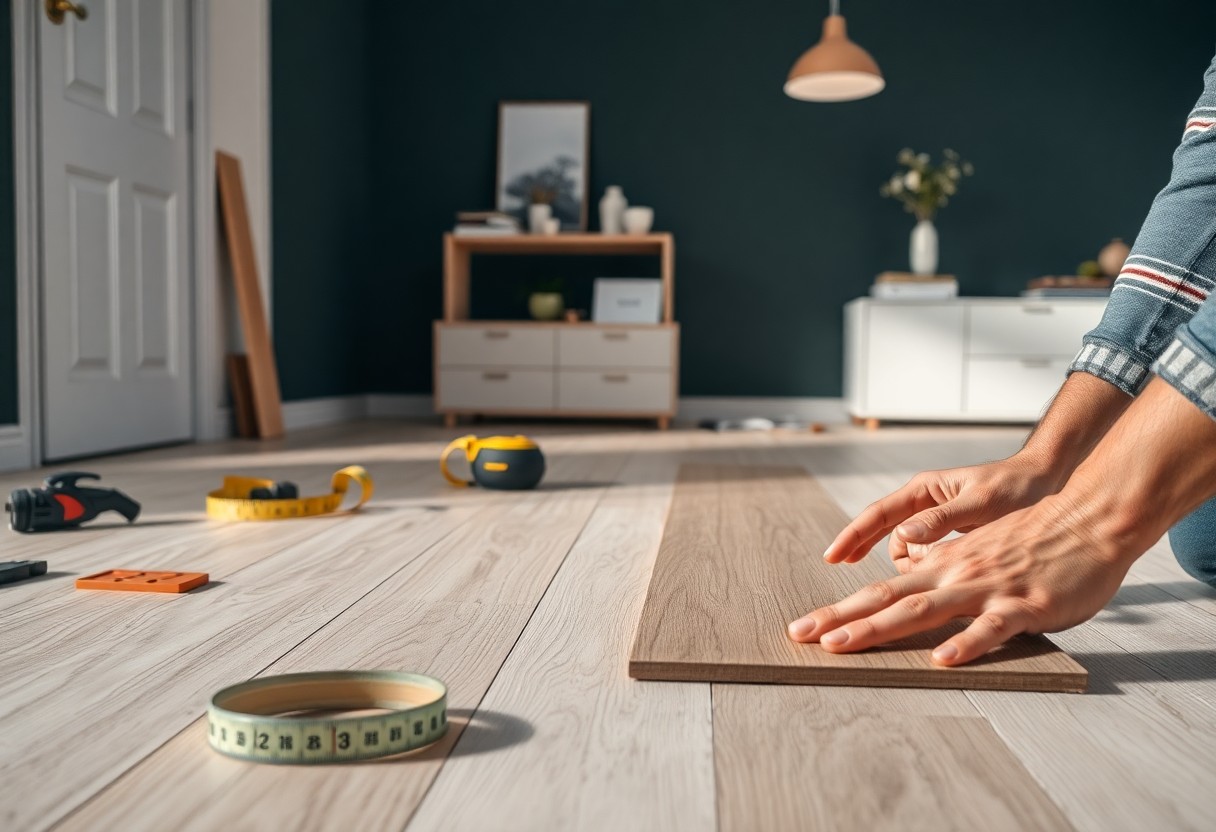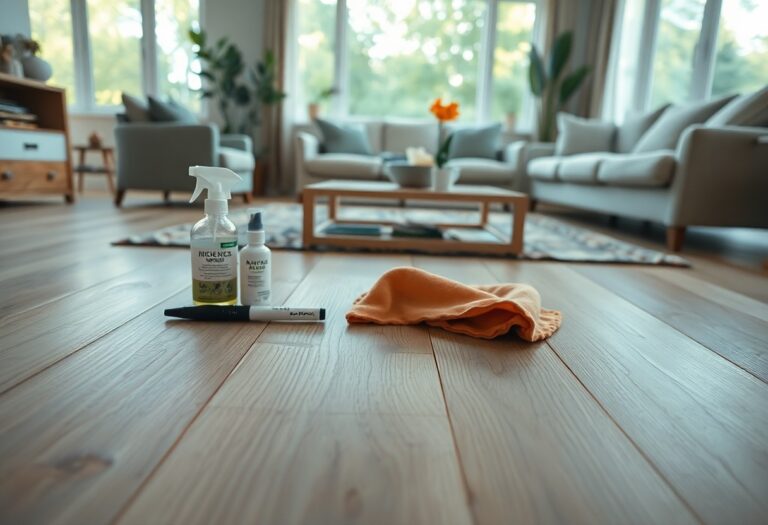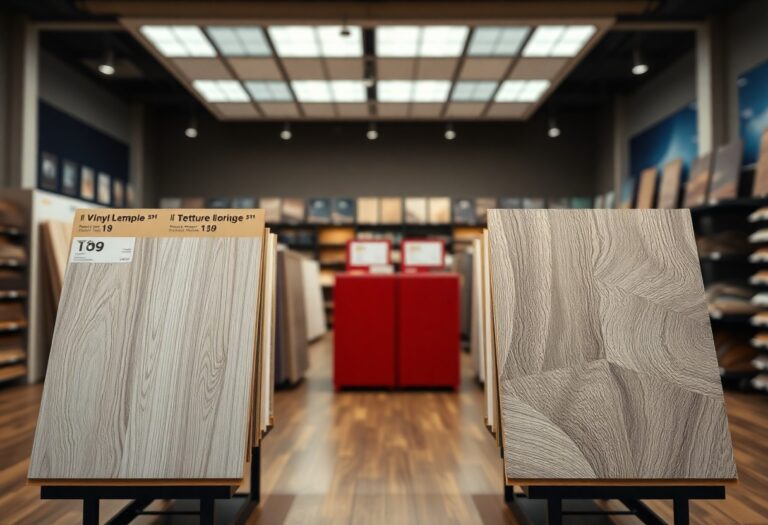You hold the key to transforming your space with SPC vinyl flooring, a stylish and durable option for any home. This guide will provide you with necessary tips and tricks to ensure a seamless installation process, allowing you to achieve a professional-looking finish. Whether you’re a DIY enthusiast or a first-time installer, you’ll find valuable insights on preparation, materials, and techniques that will elevate your flooring project. Get ready to bring your vision to life with confidence!
Understanding SPC Vinyl Flooring
The SPC vinyl flooring, or Stone Plastic Composite, is a revolutionary flooring solution combining the durability of stone and the flexibility of plastic. This type of flooring features a rigid core, making it waterproof, resistant to wear, and exceptionally easy to maintain. Whether you’re renovating your home or upgrading your office, SPC vinyl offers a practical yet stylish option for any space.
Types of SPC Vinyl Flooring
The vast range of SPC vinyl flooring available allows you to choose the perfect style for your needs. Understanding the types can help you make an informed decision:
- Wood-Style SPC: Mimics natural wood grain.
- Stone-Style SPC: Replicates stone textures.
- Tile-Style SPC: Features a tile appearance for bathrooms and kitchens.
- Mixed Styles: Combines various designs for unique aesthetics.
The versatility of SPC vinyl flooring ensures that you can find the right match for your interior design.
Pros and Cons of SPC Vinyl
| Pros | Cons |
|---|---|
| Waterproof | Can be slippery when wet |
| Durable and impact-resistant | Limited design options compared to natural materials |
| Easy installation | Can be prone to scratching |
| Low maintenance | Not as eco-friendly as other materials |
| Comfortable underfoot | May fade in direct sunlight |
Vinyl flooring comes with both benefits and drawbacks, ensuring you assess whether it fits your specific needs. The waterproof feature makes it perfect for high-moisture areas, while its durability ensures longevity. However, some designs may not appeal to everyone, and scratching can occur if not properly protected.
Pros and Cons of SPC Vinyl
| Pros | Cons |
|---|---|
| Easy to clean | Tends to be noisy when walked on |
| Cost-effective substitute for hardwood | Can expand and contract with temperature changes |
| Available in various designs | May not provide the same warmth as real wood |
| Resistant to stains | Limited cushioning compared to carpets |
| Suitable for radiant heating systems | Installation may require professional help for large areas |
Pros of SPC vinyl flooring include its ease of cleaning and affordability as a hardwood alternative. Furthermore, its resistance to stains makes it ideal for households with pets or children. Nevertheless, certain issues, such as noise and temperature sensitivity, could be considerations for you, so it’s crucial to weigh these factors before making a final decision.
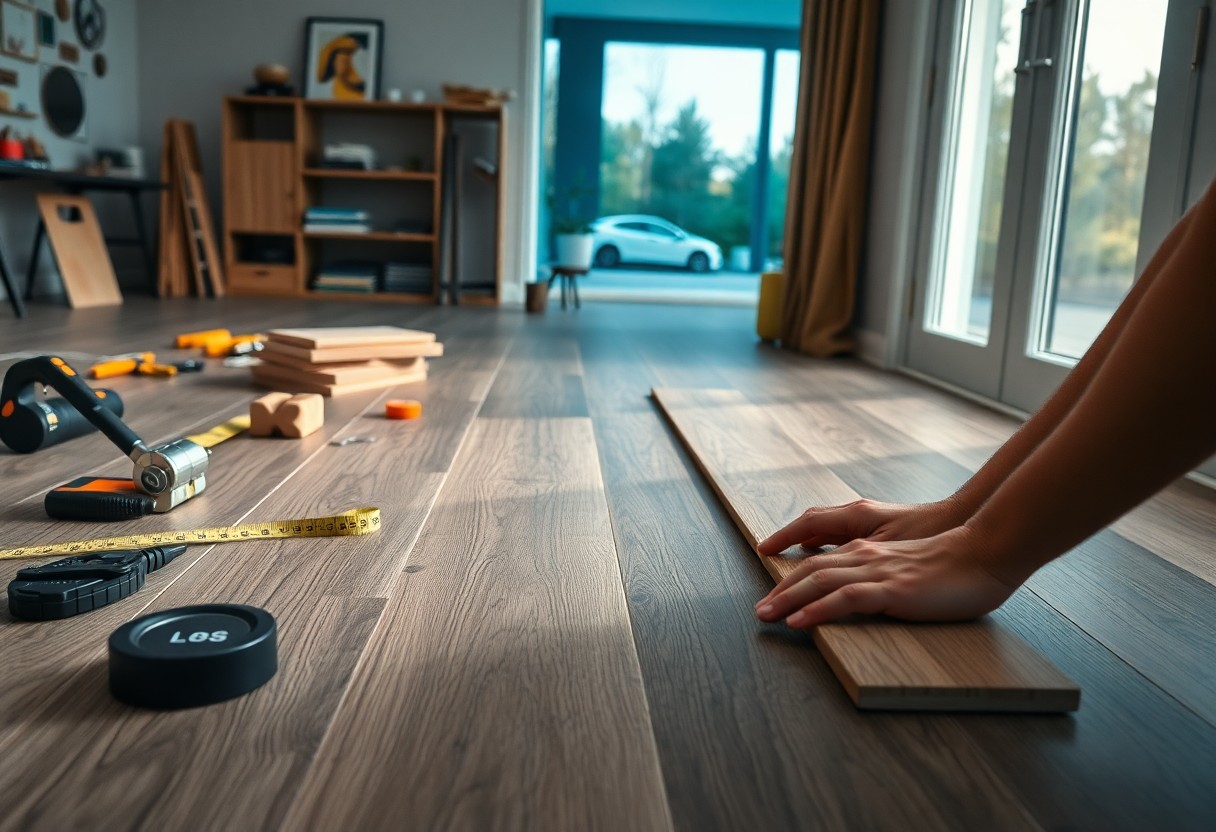
Factors to Consider Before Installation
It’s necessary to evaluate several factors before installing SPC vinyl flooring to ensure optimal results. Key considerations include:
- Your space’s humidity levels
- The type of subfloor beneath the vinyl
- The specific brand and style of SPC flooring
- The overall traffic and use of the area
This understanding will help you make informed decisions for a durable and stylish finish.
Subfloor Preparation
On the path to a successful installation, the preparation of your subfloor is paramount. Ensure the subfloor is clean, dry, and free from any debris or imperfections. Any uneven surfaces should be leveled, as SPC flooring requires a smooth base for optimal performance. Additionally, check for moisture levels, as excess moisture can cause issues in the long run.
Room Conditions
Conditions within your installation area directly impact your SPC vinyl flooring’s performance and longevity. When planning your flooring project, assess the temperature and humidity levels. Ideally, the temperature should be between 60°F and 80°F, and humidity levels should remain consistent. Extreme fluctuations can lead to expansion or contraction of the flooring.
Consider the long-term implications of the environment where your SPC flooring will reside. Rooms with high moisture, like bathrooms or kitchens, may require additional moisture barriers. Conversely, direct sunlight can cause fading, making window treatments a wise investment to protect your flooring over time. A stable environment ensures your new flooring remains beautiful and functional for years to come.
Step-by-Step Installation Process
If you’re ready to install SPC vinyl flooring, following a step-by-step process will help achieve a flawless finish. Start by preparing your subfloor, then lay the planks according to the manufacturer’s instructions, ensuring you maintain proper alignment and stagger the seams for stability. Lastly, complete the installation with trim and transitions to create a polished look. For a better understanding, check the table below for a quick overview of the specific steps involved in the process.
| Steps | Description |
|---|---|
| 1. Prepare the Subfloor | Ensure the subfloor is clean, dry, and level. |
| 2. Acclimate the Planks | Let the flooring adjust to room temperature for 48 hours. |
| 3. Start Laying the Planks | Begin from a corner and lay planks row by row. |
| 4. Stagger the Joints | Offset seams for a more natural look and added strength. |
| 5. Install Baseboards | Finish by adding trim to enhance the overall appearance. |
Tools and Materials Needed
One of the first steps in the installation process is gathering the necessary tools and materials. You will need a utility knife, measuring tape, a straight edge, and a tapping block. Additionally, having a mallet, spacers, and a carpenter’s square on hand will aid in achieving precise cuts and proper alignment. This foundational setup will facilitate a smoother installation experience.
Installation Techniques
To ensure the best results during your SPC vinyl flooring installation, focus on employing effective techniques. Begin by working in small sections, using spacers to maintain expansion gaps along walls. Additionally, press each plank firmly into place and tap it with a mallet for a secure fit. This approach enhances stability and prevents movement over time.
It’s important to pay attention to detail during the installation. As you lay each plank, ensure you are lining them up correctly to avoid gaps and misalignments. Utilize the tapping block to gently knock planks into place without damaging them. Lastly, take your time to adjust any planks that don’t match perfectly, as this allows for a more seamless and visually appealing floor once installed.
Tips for a Flawless Finish
Despite the challenges that may arise during your SPC vinyl flooring installation, achieving a flawless finish is entirely possible with the right approach. Follow these tips to ensure success:
- Ensure the subfloor is clean and level before installing the planks.
- Acclimate your SPC vinyl flooring to the room temperature for at least 48 hours.
- Use a high-quality underlayment for added comfort and soundproofing.
- Carefully align and stagger your planks to create a natural look.
Any small detail can make a significant difference in the final appearance of your floor.
Common Mistakes to Avoid
Even seasoned DIYers can overlook important steps during installation. Be cautious of common pitfalls that can detract from your SPC vinyl floor’s overall look and durability. Avoid:
- Neglecting the importance of underlayment.
- Forgetting to allow expansion gaps around walls.
- Using improper adhesive or installation methods.
- Failing to check the manufacturer’s guidelines.
Maintenance Tips
To keep your SPC vinyl flooring looking great long after installation, regular maintenance is key. Implement the following practices for optimal longevity:
- Clean spills immediately to prevent staining.
- Use a soft broom or vacuum for daily cleaning.
- Mop periodically using a gentle cleaner designed for vinyl.
- Avoid harsh chemicals or abrasive tools to prevent damage.
This will help you maintain its beauty and ensure your investment lasts for years to come. Perceiving these maintenance tips as part of your routine will contribute to the continued satisfaction of your flooring.
Troubleshooting Installation Issues
All installations can encounter problems, but knowing how to navigate these challenges ensures a smoother process. Whether it’s uneven subflooring, misaligned planks, or adhesive issues, being prepared to troubleshoot these common problems will help you achieve the flawless finish you desire. Pay attention to the details during installation, and you’ll find solutions easily.
Identifying Common Problems
Issues may arise during your SPC vinyl flooring installation, such as planks not locking properly, bubbles, or gaps between edges. It’s important to be vigilant and identify these issues early on. Acknowledging them can help you implement effective solutions before they escalate into bigger complications.
Quick Fix Solutions
With a few handy techniques, you can resolve many common installation issues quickly. For instance, if your vinyl planks aren’t locking together correctly, check for debris stuck in the seams or consider adjusting the angle at which you’re installing them. Adhesive bubbles can often be smoothed out with a roller or by using a heat gun to soften the material. Meanwhile, gaps can be filled using a proper vinyl seam sealer to achieve a seamless look.
For instance, if you find that some planks aren’t aligning or are difficult to snap together, try lifting the plank at a slight angle before bringing it down, ensuring it meets the edge of the adjacent plank. If you’re dealing with bubbles under the flooring, using a floor roller or a laminate flooring tool can help push the air out effectively. Additionally, always ensure your subfloor is perfectly level and clean to prevent gaps or misalignment when you install your SPC vinyl flooring.
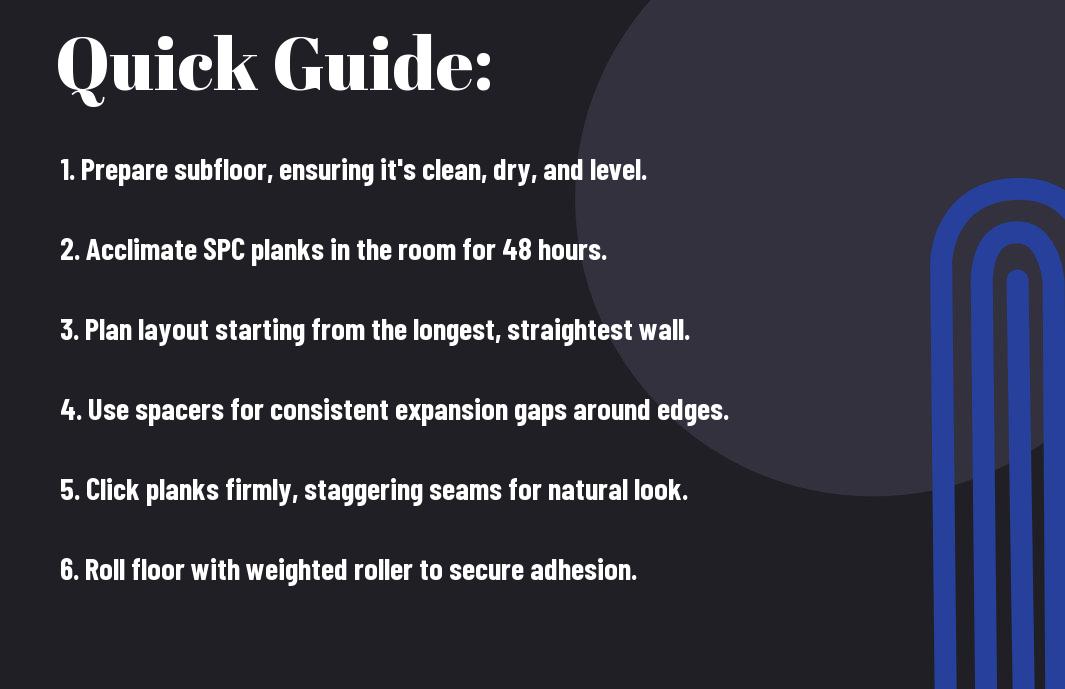
Summing up
As a reminder, following the tips and tricks laid out in ‘The Ultimate Guide To SPC Vinyl Flooring Installation’ will help you achieve a flawless finish in your flooring project. By preparing your workspace properly, paying attention to temperature and humidity, and using the right tools, you can ensure a successful installation. Your attention to detail, from the subfloor to the final touches, will result in a beautiful and durable floor that enhances your space. With the right knowledge and approach, you can confidently tackle your SPC vinyl flooring installation.


